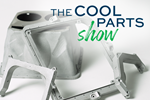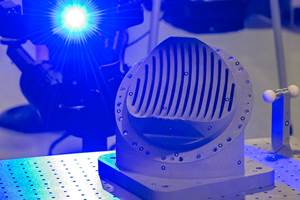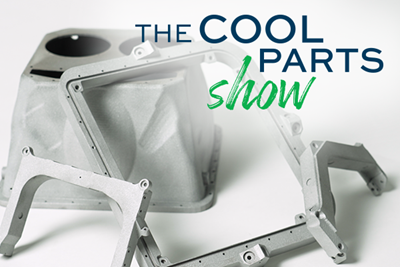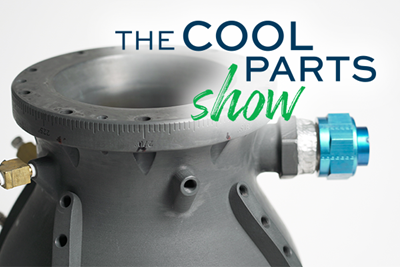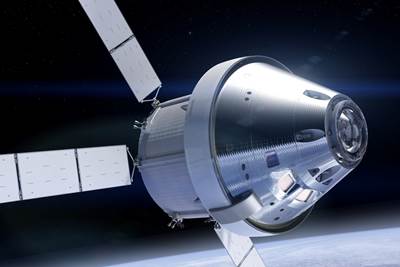The human relationship with space has changed dramatically within a lifetime. What was once an unreachable expanse is now the next frontier for technology, industry, medicine and even tourism. The demand for more satellites, increasing frequency for space missions, the planned Artemis base on the moon and other ventures are all creating new challenges in manufacturing. Additive manufacturing (AM) may not be the answer to all of these challenges, but there are many opportunities for this technology to aid and assist endeavors in space.
This was the focus of the recent Excellence in Space Seminar hosted live and virtually by Additive Industries on April 20, 2022, coinciding with the opening of the company’s new Process and Application Development Centre in Filton, U.K. Speakers from both academia and industry described new technological developments and production methods that will be needed to realize all the potential that space represents.
Here are six opportunities for additive manufacturing that were shared, some still in the future and some happening right now:
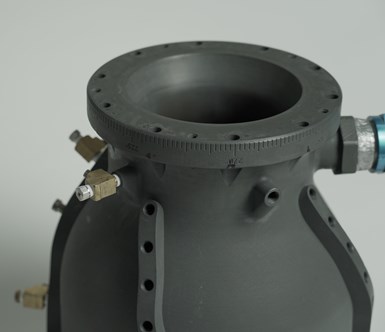
Combustion chambers like this one designed by Masten Space Systems can be 3D printed for weight savings and to take advantage of advanced materials — here, a metal matrix composite.
1. Getting vehicles to space
Reusable and more efficient launch vehicles are necessary as space flights pivot away from one-off missions to repeatable ventures. In addition, the frequency and quantity of launches is expected to continue to grow; according to speaker Mike Curtis-Rouse, head of access to space at Satellite Applications Catapult, ten years ago there were just 12 launch companies while today there are more than 320. These companies and space agencies are increasingly turning to additive manufacturing for complex components such as thrusters and engines, where 3D printing can help reduce weight and improve performance. Dan Etenberg, CEO at LIA Aerospace, described how his company is creating next-generation rocket engines that incorporate regenerative cooling by virtue of additive manufacturing. Metal 3D printing allows for “building in reduced spaces and in compact fashion,” he says, which brings footprint reductions in addition to weight savings and fuel efficiency.
2. Making systems to be used in space
Satellite networks, orbit vehicles, rovers and more can benefit from designs enabled by additive, and these systems will only grow in number. Curtis-Rouse speculated that three or four commercial space stations will join the International Space Station (ISS) in orbit within the next decade, and pointed to efforts by the U.K.-based Space Energy Initiative to begin work on an orbital solar power plant that would send energy to earth as microwaves. 3D printed parts already exist in space within systems such as the Perseverance rover on Mars and various satellites; more are expected where AM can deliver complex geometries or overcome manufacturing challenges for these components. Additive manufacturing materials’ specialized characteristics such as electrostatic dissipative (ESD) properties and heat resistance will be important to these items as well.
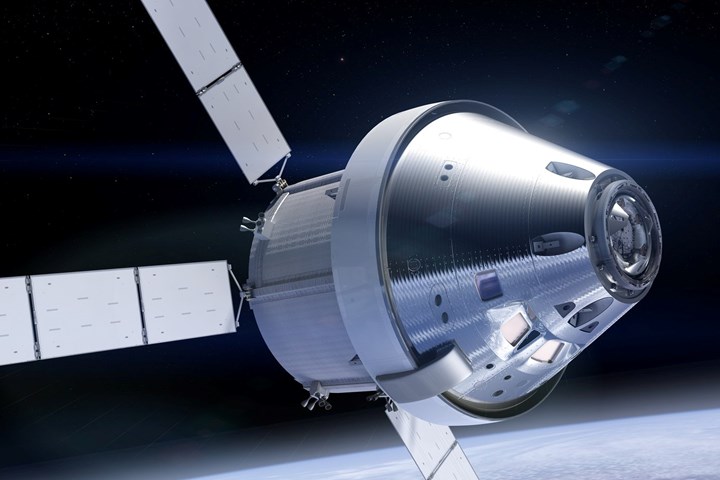
Satellites, solar plants and vehicles like the Orion spacecraft rendered here will benefit from additively manufactured components. Photo Credit: NASA
3. Producing spare parts
Keynote speaker R. G. Clinton, associate director of NASA’s science and technology office, described the current challenges with maintaining the International Space Station through spare parts; at any one time there are thousands of spare parts stored on the ISS and on earth, but only a small portion are ever used. The ability to use 3D printing as a production process in space would help alleviate the supply chain and inventory challenges presented by spare parts; printing these pieces in situ reduces waste and simplifies logistics. Made in Space successfully demonstrated 3D printing of polymers in space with the Zero-G printer, an extrusion 3D printer used on the ISS in 2014. More recent projects focus on 3D printing of other materials such as ceramics and metals, and even the use of hybrid systems that combine 3D printing and CNC machining. Being able to 3D print tools, replacement parts and more in space will be key to enabling longer space missions and potentially further exploration.
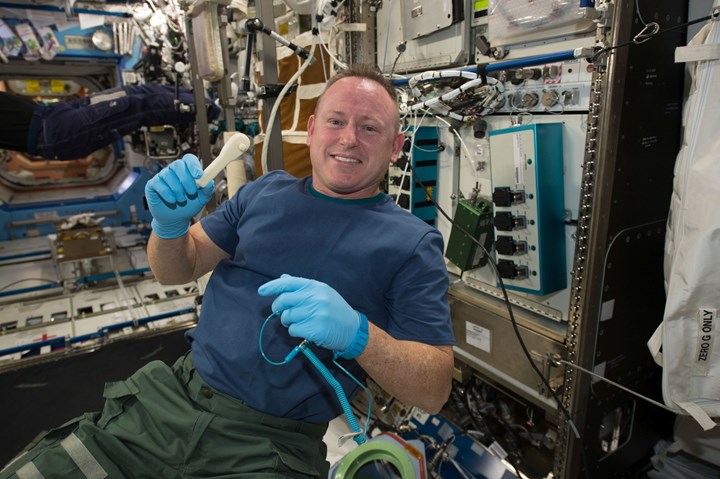
The ratchet wrench shown here was 3D printed on the ISS in 2014, from a design file sent from earth. Other tools and spare parts could be made in space in the future. Photo Credit: NASA
4. Manufacturing products for earth
There are compelling reasons to utilize AM for in-orbit manufacturing (IOM) to make items that today are difficult or impossible to manufacture on earth. Curtis-Rouse described the challenges with producing fiber optics for suboceanic cables for instance; while it is possible to produce these fibers on earth, they are limited in length and the cooling rate creates bubble that introduce latency. When produced in microgravity, the optics are nearly translucent and can easily be made longer. Other industries such as semiconductors and pharmaceuticals can also benefit from production in microgravity. Mastering the mechanics of 3D printing in microgravity could expand additive’s capabilities and allow it to be used in these applications; certain challenges such as the need for support structures might even be solved through printing in orbit.
5. Building habitat and infrastructure
NASA’s Artemis mission will eventually lead to the establishment of a basecamp on the surface of the moon which will include infrastructure such as launch pads and roads in addition to habitats and later production facilities such as greenhouses, refineries and power plants. 3D printing will be a part of that construction. Because transporting building materials to space is costly, the Moon to Mars Planetary Autonomous Construction Technologies or MMPACT Project (of which Clinton is principal investigator) is exploring 3D printing these structures using the moon’s regolith as a building material, in combination with binders from earth. A robotic 3D printing system using this feedstock will allow for autonomous construction on the moon’s surface, without waste and using local materials.

This rendering from ICON, one of the partners on the MMPACT project, illustrates what a 3D printed habitat on the moon might look like. Photo Credit: ICON
6. Outfitting habitats
The MMPACT project is also exploring lunar outfitting, or “turning a house into a home,” as Clinton describes it. Habitats, greenhouses, laboratories and other structures built on the moon or elsewhere will not be complete with just walls, floors and roofs. Additional items such as furniture, tools, sensors and lab equipment are also needed to make these structures functional and livable. Rather than transport objects like chairs, oxygen sensors and workbenches from earth, 3D printing can be applied to produce these items on site — perhaps even with lunar regolith or material recycled from decommissioned launch vehicles or other equipment.
Related Content
Additive Manufacturing in Space: Failing Upward
Not all 3D printed parts destined for space need to adhere to the standards of human space flight. Yet all parts made for space programs require some type of qualification and certification. NASA and The Barnes Global Advisors explore Q&C for these parts.
Read More8 Transformations 3D Printing Is Making Possible
Additive manufacturing changes every space it touches; progress can be tracked by looking for moments of transformation. Here are 8 places where 3D printing is enabling transformative change.
Read MoreReusable LOX/Kerosene Engine Completes First Successful Full-System Test Flight
Galactic Energy Space Technology announced the first successful full-system test flight of its Welkin 50-ton reusable LOX/kerosene engine. To date, this is the highest thrust LOX/kerosene engine in the Chinese commercial aerospace playing field which has officially entered the engineering and manufacturing phase.
Read MoreArburg Freeformer 750-3X 3D Features Larger Build Chamber
Formnext 2022: The Freeformer 750-3X 3D provides more space inside the build chamber for larger components.
Read MoreRead Next
3D Printed Parts on the Mars Perseverance Rover: The Cool Parts Show #23
The Perseverance parts made through additive manufacturing are extreme examples of lightweighting. We have replicas of the 3D printed parts that were sent to Mars.
Read MoreLightweight Combustion Chamber for 3D Printed Rocket Engine: The Cool Parts Show #30
An engine for repeated trips to the moon is 3D printed in just three pieces from a metal matrix composite combining aluminum for weight saving with ceramic for high-temperature performance.
Read MoreOrion Gets a Lift from Electro-Static Dissipative (ESD) Material
NASA’s Orion spacecraft will include parts 3D-printed from electro-static dissipative Antero 800NA from Stratasys. Developing this material was an exercise in working within constraints.
Read More

.jpg;width=70;height=70;mode=crop)
